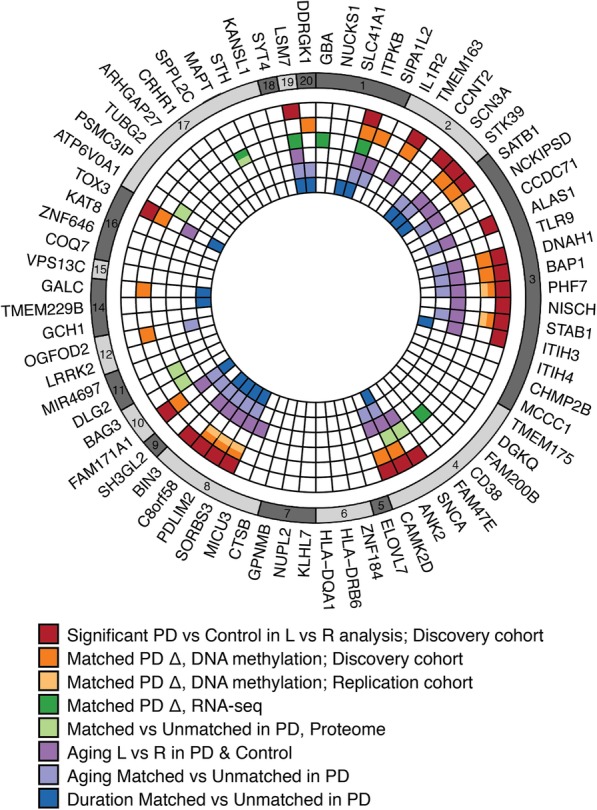Fig. 6.

PD risk genes contribute to hemispheric asymmetry in neurons of PD patients. PD risk genes identified by GWAS [50] were found to exhibit differential hemispheric asymmetry in PD patients relative to controls, were preferentially dysregulated in the PD symptom-dominant hemisphere, and were involved in hemispheric asymmetry changes occurring with aging and PD disease course. Genes identified in eight independent analyses that include epigenetic, transcriptomic, or proteomic data are presented. The plot summarizes PD risk genes with (1) left–right hemispheric differences in PD relative to controls that involve epigenetic changes at cis-regulatory elements (red); (2 and 3) epigenetic dysregulation that is greater in the symptom-dominant hemisphere than in the non-dominant hemisphere (relative to control hemispheres), as determined in discovery cohort (orange) and replication cohort (yellow); (4 and 5) disruption in PD that is associated with symptom lateralization, as determined by analysis of the transcriptome (dark green) and proteome (light green); (6) aging changes in left–right hemispheric asymmetry in epigenetic regulation in PD and controls (purple); (7) aging changes in epigenetic regulation between the symptom-dominant and non-dominant hemisphere in PD (indigo); (8) hemisphere asymmetry in DNA methylation associated with length of PD disease course (blue). Colored boxes represent significant changes affecting the PD risk gene
